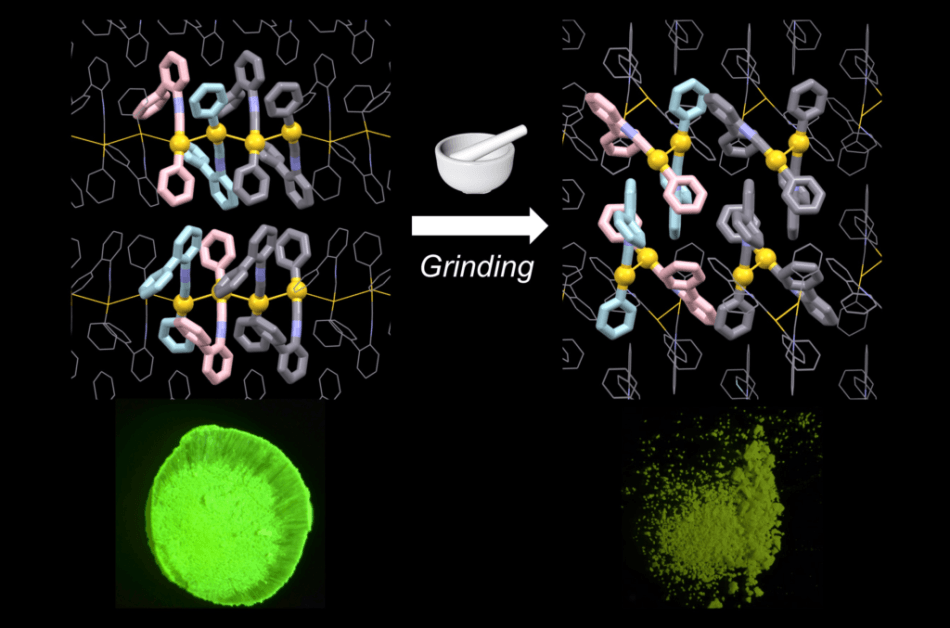Jul 26 2017
“Smart” materials capable of changing color in response to a mechanical stimulus have a wide variety of applications such as producing pressure-sensitive sensors and packaging that can identify tampering.
 Grinding chiral crystals of gold and isocyanide complexes caused them to transition into achiral crystals while simultaneously changing their emission properties. Credit: Jin M. et al., Journal of the American Chemical Society, May 23, 2017
Grinding chiral crystals of gold and isocyanide complexes caused them to transition into achiral crystals while simultaneously changing their emission properties. Credit: Jin M. et al., Journal of the American Chemical Society, May 23, 2017
Recently, a novel “mechano-responsive luminescent material” was designed by Researchers at Hokkaido University by using a gold and isocyanide complex, which comprises of two bonded rings of hydrogen and carbon atoms.
The material is a viscous oil when it is initially prepared. An orange color is emitted by the oil under ultraviolet irradiation. However, when oil is pricked with a needle it arbitrarily crystallizes either into “achiral” whitish-grey crystals that release bluish-green light or into “chiral” yellow crystals that discharge green light.
A crystal is chiral if the molecules are arranged in a manner that it cannot be superimposed onto its mirror image. This makes the right and left hands chiral, for instance, while a soda pop can is capable of being achiral.
The oil also converted either into achiral or chiral crystals when in touch with tiny small pieces of each crystal respectively. Additionally, when ultrasonic was used on the oil for 20 minutes, it changed into a powder of the achiral crystals.
Surprisingly, grinding chiral crystals allowed them to transform into achiral crystals while changing their emission properties in a simultaneous manner.
This is the first proof that the chiral-to-achiral phase transition caused by a mechanical stimulus could alter emission properties. Achiral crystals are generally more stable than chiral crystals, known as Wallach’s Rule. This makes the chiral-to-achiral transition very reasonable.
Hajime Ito, the Corresponding Author of the Study published in the Journal of the American Chemical Society
According to the Researchers, this is considered to be the first such example of this type of material, and their findings specify that the dynamic change between the two crystal phases may be a favorable strategy for designing universal mechano-responsive functional materials.
By targeting molecules that can form both chiral and achiral crystals and follow Wallach’s Rule, we might be able to develop mechano-responsible materials more strategically and efficiently.
Hajime Ito, the Corresponding Author of the Study published in the Journal of the American Chemical Society